#Henry B. Walthall
Text
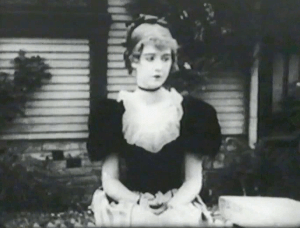


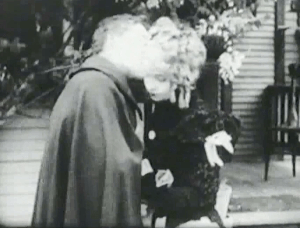
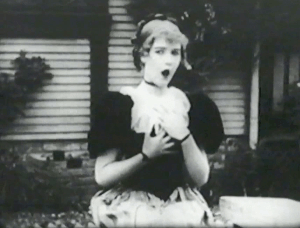
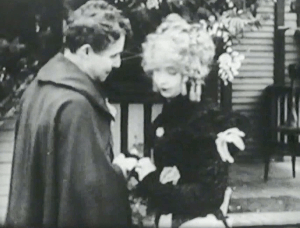
Home, Sweet Home (1914, D.W. Griffith)
#home sweet home 1914#d.w. griffith#dorothy gish#lillian gish#henry walthall#henry b. walthall#favorite scene#really cute dorothy#i adore you mr. walthall
6 notes
·
View notes
Photo
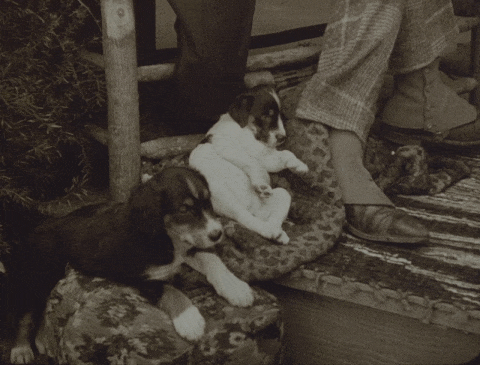
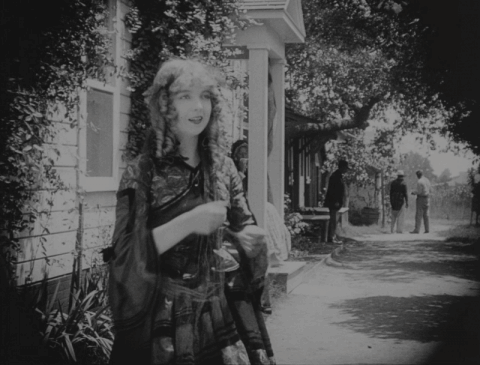

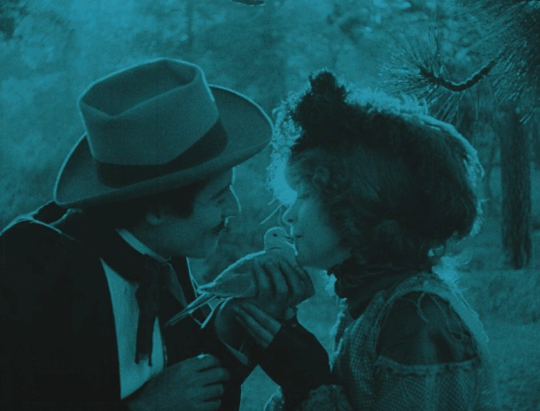
The Birth of a Nation (D.W. Griffith, 1914)
#the birth of a nation#d.w. griffith#d. w. griffith#griffith#henry b. walthall#lillian gish#dog#gif#dove#1914#silent film#silent movies#silent cinema#silent
56 notes
·
View notes
Text
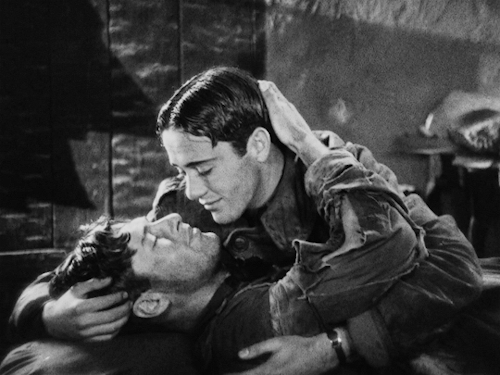
WINGS 1927
Jack - don't you know me?
#wings#1927#clara bow#charles rogers#richard arlen#jobyna ralston#el brendel#richard tucker#gary cooper#gunboat smith#henry b. walthall
11 notes
·
View notes
Text










Judge Priest (1934) John Ford
December 14th 2023
#judge priest#1934#john ford#will rogers#tom brown#anita louise#stepin fetchit#henry b. walthall#david landau#hattie mcdaniel#charley grapewin#berton churchill#rochelle hudson#brenda fowler#frank melton#old judge priest
2 notes
·
View notes
Photo
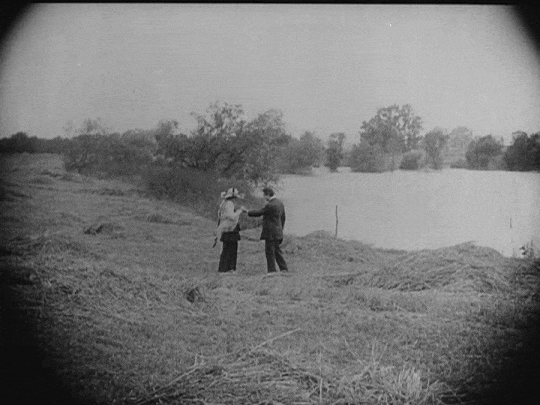
The Avenging Conscience: or 'Thou Shalt Not Kill' (D.W. Griffith, 1914)
#the avenging conscience: or 'thou shalt not kill'#d.w. griffith#griffith#d. w. griffith#silent film#1914#gif#silent movies#silent cinema#silent#blanche sweet#henry b. walthall#the avenging conscience#edgar allan poe
16 notes
·
View notes
Photo

#a tale of two cities#ronald colman#elizabeth allan#edna may oliver#reginald owen#basil rathbone#blanche yurka#henry b. walthall#jack conway#1935
5 notes
·
View notes
Text








A Trap for Santa Claus (1909, D.W. Griffith)
#a trap for santa claus 1909#d.w. griffith#henry b. walthall#henry walthall#mack sennett#sennett in biograph company#sennett in his late twenties#walthall and sennett on the same screen♥
0 notes
Text

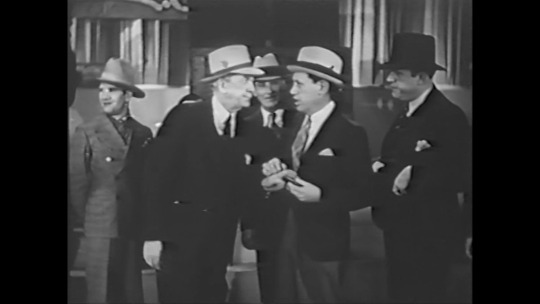
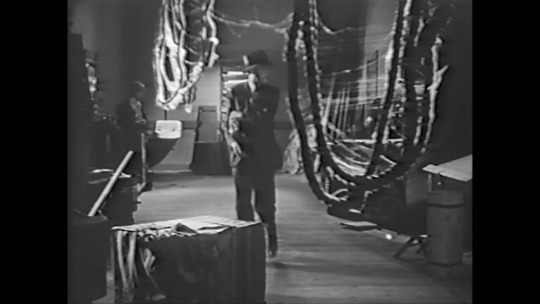
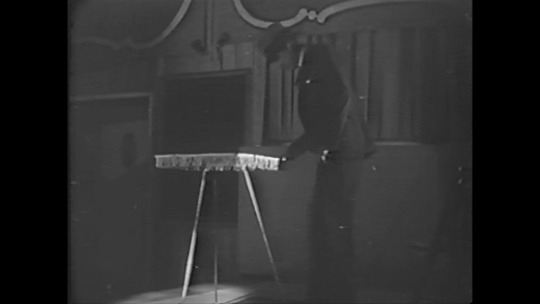
youtube
The Murder in the Museum (1934)
My rating: 4/10
Dull and unremarkable, and for a movie set at a sideshow bizarrely devoid of any kind of music (seriously, there's actual dance scenes set entirely to crowd noises), but ultimately, I suppose, inoffensive.
#The Murder in the Museum#Melville Shyer#F.B. Crosswhite#Henry B. Walthall#John Harron#Phyllis Barrington#Youtube
1 note
·
View note
Text
Chandu the Magician 1932


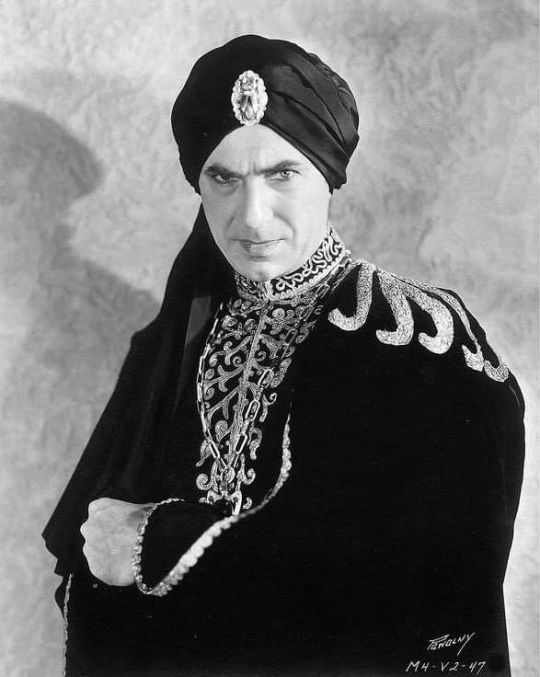

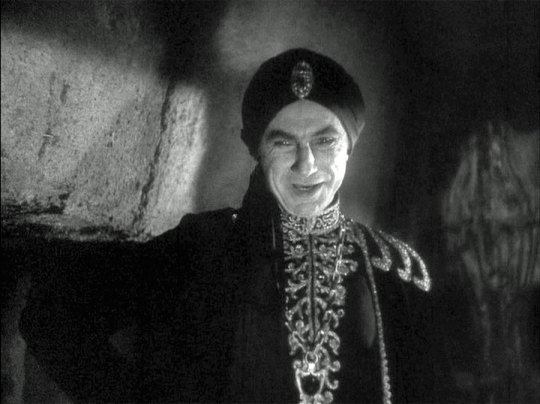
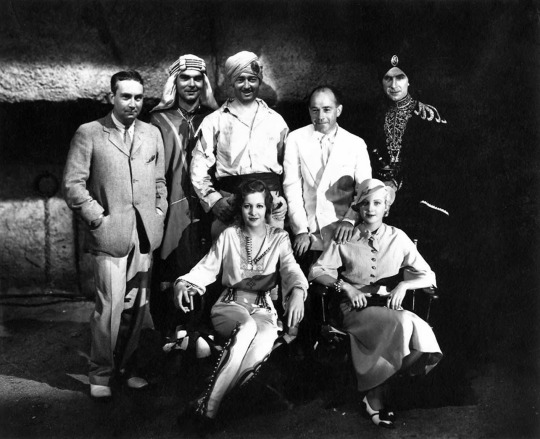


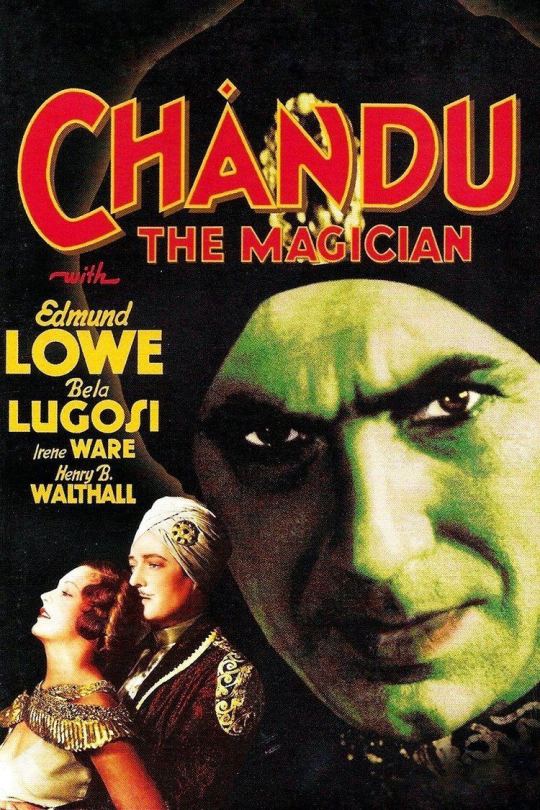

Roxor (Lugosi) kidnaps Robert Regent and his death ray invention. He hopes to degenerate humanity into mindless brutes, leaving himself as Earth's supreme intelligence.
22 notes
·
View notes
Text
Spooky Season 2024: 12-22
Phantom of the Mall: Eric's Revenge (dir. Richard Friedman, 1989)
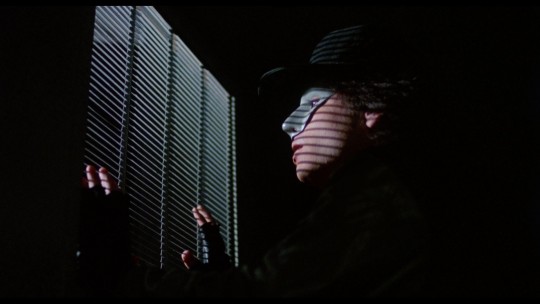
The opening of the new mall is hampered by one thing: a Phantom hiding in the air vents, and committing robbery and murder. It turns out this Phantom is really a teenager named Eric (Derek Rydall) disfigured in a fire set by the mall's developers to clear out any remaining houses impeding their dreams of commercial development. Now, Eric plans on having his revenge and watching over his girlfriend Melody (Kari Whitman), now an employee of the mall. But what will he make of her burgeoning romance with a journalist?
Talk about pure '80s cheese. This film feels like it was made to capitalize on the slasher cycle and the popularity of the Andrew Lloyd Weber Phantom of the Opera megamusical. It's not a particularly good movie, but it is dumb fun. I love how this Phantom makes free use of the goods available in the stores and how he spams his spin kick attack like he's in a video game.
Also, Pauly Shore is in this. He has a great scene talking about subliminal messaging in department stores, but is otherwise the usual Pauly Shore.
Hangover Square (dir. John Brahm, 1945)

Musician George Harvey Bone (Laird Cregar) is disturbed by long sessions in which he blacks out. He fears he may be committing murder, but is reassured by the police when he goes to them that isn't likely. Detective Dr. Allen Middleton (George Saunders) advises the overworked George take a break from composing. George does so by going to a pub where he meets the lovely Netta Longdon (Linda Darnell), a music hall entertainer who dreams of fame. George and Netta enter into a toxic relationship in which she uses him to advance her career while seeing other men on the side. When George discovers her treachery, his blackouts return-- this time in a far more violent form.
I'm starting to become fascinated by John Brahm, a director best remembered for his moody, macabre dramas in the 1940s. Hangover Square was his second and final collaboration with the talented but doomed Laird Cregar, who died two months before the film was released. It's as much a noir as a horror picture, drenched in that chiaroscuro lighting and urban dread so common to the classic cycle.
Cregar is astonishing in the lead role. Though handsome, he was a bigger man, so Hollywood refused to allow him to transition into leading man parts. He is marvelous here, passionate and sensitive, yet also sinister once his jealous rage takes over. I've seen Cregar in multiple films and he was truly fantastic, able to be comic as well as dramatic. Hollywood didn't deserve him.
Lastly, Linda Darnell's character sings this really catchy song when Cregar first sees her. I saw this film weeks ago but it is STILL STUCK IN MY HEAD.
youtube
The Sealed Room (dir. DW Griffith, 1909)

In some nondescript time period (everyone's dressed like it's either the early 18th century or the middle ages), a king (Arthur V. Johnson) learns his mistress (Marion Leonard) is smooching with a musician (Henry B. Walthall). Jealous to the point of rage, he has the couple sealed in a small room where they suffocate to death.
The Sealed Room is a gem from the nickelodeon era, though I admit my liking for it comes from how extra all the performances are, even by the standards of the early silent period.
It also has one of my favorite instances of what I like to call "silent film logic"-- that is, scenes featuring action that would be very loud in real life, but in a silent film, you may not think about it as much. Here, the king has the lovers walled up alive in a small room, where they lounge unaware. And yet, there's workers slapping up a brick wall not ten feet away from them! It's very amusing.
Frankenhooker (dir. Frank Henenlotter, 1990)

When his girlfriend Elizabeth (Patty Mullen) gets hacked to death by an automatic lawnmower he built, medical student Jeffrey (James Lorinz) decides to resurrect her by killing sex workers for their shapely body parts then sewing Elizabeth's severed head on top. He does this by having his victims smoke explosive crack.
No, I'm not making this up.
I first heard about Frankenhooker from James Rolfe of Angry Video Game Nerd fame. It sounded so insane that I knew I had to watch it. It's-- well, it's definitely a bizarre movie with lots of crude humor and pitch black jokes.
Would you believe me if I said it was kind of an unsung feminist work? I definitely did not expect THAT angle coming in, but that messaging is definitely there. Jeffrey is a villain-protagonist through and through, even before he starts committing murder. We learn he was already demanding Elizabeth modify her appearance to suit his tastes before she got killed. He views women as more a collection of body parts than proper people. However, his misogyny does catch up with him in the end and his fate at the resurrected Elizabeth's hands is the very definition of irony. I don't want to spoil it.
It's definitely not for everyone, but if you have a sick sense of humor and some friends that share that humor, you'll have a good time.
Friday the 13th: Part 2 (dir. Steve Miner, 1981)
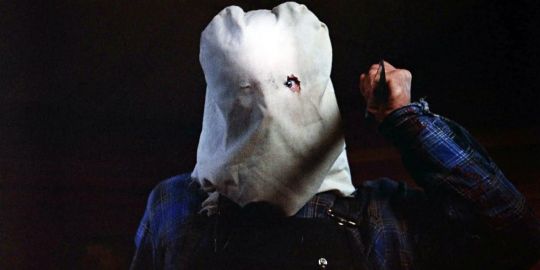
A summer camp close to the infamous Camp Crystal Lake is about to open. Little do the young, horny counselors know, Jason (Warrington Gillette and Steve Daskewicz)-- the boy that allegedly drowned long ago-- is still alive and he's mad his mama got decapitated in the previous film. Lots of people die.
I confess I have a hard time getting into these Friday the 13th films. I've read it took a few entries for the series to find its footing as gloriously dumb schlock, but the first one and this sequel were mostly boring for me. About all I liked was the last twenty minutes, when the heroine's background in child psychology comes into play. Otherwise, this gets a big meh from me. Not horrible, but nothing I can imagine I'll ever rewatch.
Corridor of Mirrors (dir. Terence Young, 1948)
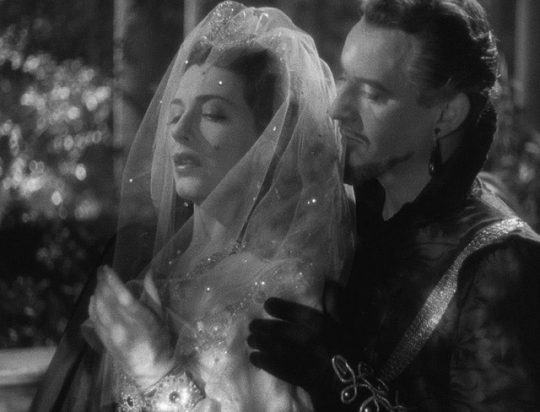
A party girl (Edana Romney) becomes involved with a Renaissance era-obessed artist (Eric Portman). Their fetishistic relationship leads to heartbreak and murder.
Already discussed this one is great detail at my Wordpress blog. It's a great romantic thriller in the vein of Vertigo and Rebecca.
The Old Dark House (dir. James Whale, 1932)
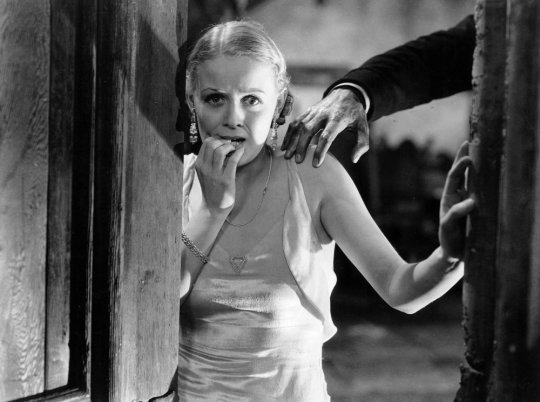
During a thunderstorm, a group of unwary British travelers are marooned at the crumbling mansion of the Femm family, a collection of eccentrics who may be insane. Everything goes wrong: the hulking butler gets drunk and preys on the women visitors, the area may flood, the lights go out, and there may be a homicidal maniac imprisoned in one of the rooms upstairs. Will anyone survive the night?
I have raved about this film for a long time now. It's truly a favorite of mine in general, not just for the Halloween season. Both witty and chilling, it's an atmospheric masterpiece. The damp and mold are palpable.
What fascinates me most is the Femm family itself and the gaps in their backstory. This is one movie where I feel like there's a Tolstoyan novel's worth of drama with the Femms. It's hinted that the 102-year-old patriarch of the house (played in drag by actress Elspeth Dudgeon) used to host orgies there. The death of the seductive sister Rebecca at the age of 21 may or may not have been due to inter-family foul play. Morgan the butler has a close, even weirdly tender relationship with the homicidally insane brother Saul, suggesting a myriad of possible connections between them. It's very interesting-- I like that the movie doesn't fill in all the blanks.
A Game of Death (dir. Robert Wise, 1945)

Don Rainsford (John Loder), big game hunter extraordinaire, finds himself shipwrecked on a mysterious island. The owner is Erich Kriegler (Edgar Barrier), an urbane German who also enjoys hunting, though with a slight difference-- he likes hunting humans. Teaming up with other shipwreck survivors Ellen (Audrey Long) and Robert (Russell Wade), Don tries finding a way to escape before they become Kriegler's next wall trophies.
This movie is a pallid, watered down, shot-for-shot remake of The Most Dangerous Game, one of the crown jewels of 1930s horror, so of course, I am not fond of it. And yet, I rewatch it every few years, so it must have something going for it. So instead of tearing into it as I normally do, I'll list a few things I think are actually good about it:
I like that the main character initially tries tricking Kriegler into thinking he will hunt people with him. Very pro-active.
I think Kriegler is a good villain. Not as memorably deranged and campy as Leslie Banks' Zaroff in the original film, but chilling in a more low-key way. His "the strong deserve to prey upon the weak" philosophy fits in nicely with Nazi ideologies-- no doubt what this wartime horror flick intended.
Um... I think Audrey Long is really pretty. I like her flow-y outfits.
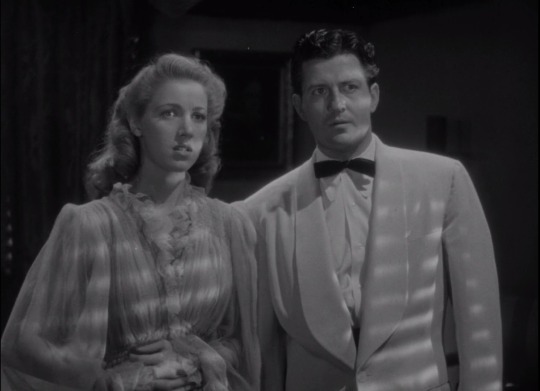
... Yeah, that's it.
The Most Dangerous Game (dir. Ernest B. Schoedsack and Irving Pichel, 1932)

All-American big game hunter Bob Rainsford (Joel McCrea) is shipwrecked on the unlisted island of Count Zaroff (Leslie Banks), a Russian aristocrat and master sportsman who claims he now hunts "the most dangerous game" of all. Being a himbo, it takes Bob a while before he realizes that game is human beings. Unwilling to hunt alongside Zaroff when given the offer, Rainsford and fellow prisoner Eve Trowbridge (Fay Wray) wage a game with Zaroff: let loose into the island's thick jungle, if they survive the night without Zaroff or the terrain killing them, they'll go free. If not, Rainsford dies and Eve will become a rather different kind of quarry for the evil count.
Now, here's my favorite "hunter hunts people" movie! While "The Most Dangerous Game" has been adapted and ripped off multiple times for a century, the original is still hard to beat. The castle set drips with gothic grandeur. The jungle soundstage is thick and suffocating, and once the chase intensifies, it becomes like something out of a nightmare.
I actually think the climactic hunt is among the greatest sequences in all cinema. The editing is so dynamic and the images are brilliant. And when you consider this is still an early talkie, when films were still trying to rediscover their footing after silent cinema came to an end, it becomes even more remarkable.
Going on Letterboxd, I was shocked to find a lot of people on there have mixed to negative opinions about this movie, largely because they think it's too over the top and that it's messaging is too on the nose.
I mean-- yes, these things are true, but I don't see them as flaws. It probably helps that I love camp and melodrama, and am not ashamed to admit it. And regardless of the fervent camp on display, I still think the trophy room scene is creepy and the chase is super intense. I have probably seen this movie close to a hundred times and yet, the chase still has me shouting at the TV, willing the characters to run faster. That's damn fine filmmaking.
The Haunting (dir. Robert Wise, 1963)
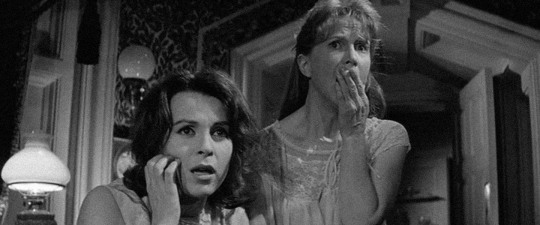
A researcher of the paranormal brings a motley crew of ordinary people into the allegedly haunted Hill House. Both potential ghosts and the neuroses of the visitors bring on sinister events and ultimately tragedy.
I love this movie more and more. I already wrote a bit about my reaction this time around, though since then, I started rereading the source novel, Shirley Jackson's The Haunting of Hill House. Obviously, the book delves more deeply into Eleanor's psyche, but the film does a fantastic job of this as well. Given film is a visual medium, it can be a challenge to depict a character's interior state without delving into expressionism and this film does that well.
The Phantom of the Opera (dir. Terence Fisher, 1962)

Aspiring songstress Christine Charles (Heather Sears) and producer Harry Hunter (Edward de Souza) are drawn into a mystery at the London Opera House. A phantom is sabotaging any attempt to produce Joan of Arc: A Tragedy, a show allegedly written by the cold, snobby, rapey Lord Ambrose (Michael Gough). After some investigating, it turns out the Phantom (Herbert Lom) was once the meek-mannered Professor Petrie, whose music was stolen by Ambrose. Now, he wants only to see his opera done justice and only Christine's voice can make that happen.
I am very fond of this version of The Phantom of the Opera even though I think it has a myriad of dramatic flaws. Let's get the flaws out the way first. I think the film is a bit repetitive in retelling us Petrie's story over and over, at first through onscreen description and then through filmed depiction. I also think the ending is anti-climactic, like the writers didn't want to go the usual route of making the Phantom a homicidal maniac but they weren't sure how to make a properly dramatic finish without that characterization.
That out the way, this is a unique, even refreshing retelling in many ways. The Phantom/Christine relationship is no longer one of unrequited love-- in fact, Petrie seems wholly uninterested in romance or sex at all. He views Christine and himself as victims of the truly despicable Lord Ambrose: Petrie had his music stolen and Christine was sexually harrassed. Therefore, it is up to the two of them to wrest the opera back from Amrbose's influence and make it the production Petrie wanted. Petrie is one hard taskmaster. He is relentless in training Christine and at one point throws filthy sewer-water in her face when she faints.
But the Phantom is hardly an out and out villain here. He doesn't even kill people-- he has a convenient hunchbacked assistant to do that. No, the real baddie is Ambrose, among the nastiest villains in the Hammer canon. Ambrose never even kills anyone, yet he makes the blood boil with his wanton cruelty. Michael Gough (who I always remember best as Alfred in the Tim Burton Batman movies, as well as Batman Forever and Batman and Robin) is so good at being bad.
This version of POTO also has my favorite version of the Phantom's compositions. Usually, he writes a "burning" piece called Don Juan Triumphant, fitting his romantic obsession with Christine. Here, Petrie writes an opera about Joan of Arc, a virginal saint persecuted by powerful men-- a fitting subject for Petrie given his own persecution by an aristocrat. Joan's aria "I Hear Your Voice" is gorgeous and always brings me to tears, it's that beautiful.
Not a perfect film, but still a very good one.
#spooky season 2024#thoughts#phantom of the mall#hangover square#frankenhooker#the old dark house#the most dangerous game#a game of death#the phantom of the opera 1962#corridor of mirrors#friday the 13th part 2#the haunting#the sealed room#horror#thriller#Youtube
28 notes
·
View notes
Text

The Birth of a Nation (D.W. Griffith, 1915)
Cast: Lillian Gish, Mae Marsh, Henry B. Walthall, Miriam Cooper, Mary Alden, Ralph Lewis, George Siegmann, Walter Long, Robert Harron, Wallace Reid, Joseph Henabery, Elmer Clifton, Josephine Crowell, Spottiswoode Aitken, George Beranger, Maxfield Stanley, Jennie Lee, Donald Crisp, Howard Gaye, Raoul Walsh. Screenplay: Thomas Dixon Jr., D.W. Griffith, Frank E. Woods, based on a novel and play by Dixon. Cinematography: G.W. Bitzer. Film editing: D.W. Griffith, Joseph Henabery, James Smith, Rose Smith, Raoul Walsh.
Is it an overstatement to say that the stench of The Birth of a Nation is more than a subset of the blight cast on American society and politics by slavery? Because Griffith's film informed an entire industry, not only with its undeniable influence on the language and grammar of film, but also in the tendency to valorize bigness above intimacy, action over thought, sensation over understanding that has characterized the mainstream of American movies. It was the first blockbuster. It was both intelligently crafted and abominably stupid. It just might be the most pernicious work of art ever made, a magnificent nauseating lie. Its portrait of Reconstruction warped the teaching of history for generations, and although the resurgence of the Ku Klux Klan that it inspired has waned, we still find ourselves swatting down the heirs of the Klan like the Proud Boys, the Promise Keepers, and others who would defend what one of Griffith's title cards calls the "Aryan birthright." Even the reaction against The Birth of a Nation has its dark side: The recognition of the power of movies that followed its release eventually produced calls for censorship that would hamstring the medium. On the right, a suspicion that movies had the power to promote a leftist agenda led to the blacklist era, in which communists, not racists, were the target. And what is the crusade by some against "wokeness" in the media but another call for the kind of ideological purity that would stifle art? So to call The Birth of a Nation an essential film is an understatement. Looking at it as a demonstration of the ability of cinema to profoundly affect society could reveal it to be the most important movie ever made.
3 notes
·
View notes
Text



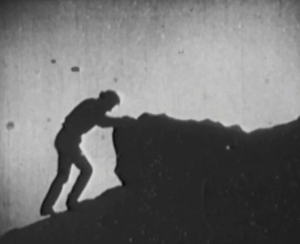


Then this ebony bird beguiling my sad fancy into smiling,
By the grave and stern decorum of the countenance it wore,
"Though thy crest be shorn and shaven, thou," I said, "art sure no craven,
Ghastly grim and ancient Raven wandering from the Nightly shore—
Tell me what thy lordly name is on the Night's Plutonian shore!"
Quoth the Raven "Nevermore."
3 notes
·
View notes
Video
Beggars In Ermine (1934) | Lionel Atwill | Betty Furness | Full Movie
Beggars in Ermine is a 1934 US pre-code movie directed by Phil Rosen. The stars are Lionel Atwill, Betty Furness, and Henry B. Walthall. John Dawson is a steel mill owner. In an accident that was planned by his devious secretary-treasurer, he loses his legs and his company. After John meets a blind peddler, Marchant, he travels the country, under an assumed name, organizing beggars, peddlers, and the handicapped. Cast Lionel Atwill as John "Flint" Dawson aka John Daniels Betty Furness as Joyce Dawson Henry B. Walthall as Marchant the Blind Man Jameson Thomas as James "Jim" Marley James Bush as Lee Marley, Jim's Son Astrid Allwyn as Mrs. Vivian Dawson George 'Gabby' Hayes as Joe Wilson Stephen Gross as Scott Taggart, Joyce's Lawyer Sam Godfrey as Enright, Marley's Lawyer Myrtle Stedman as Nurse Lee Phelps as Joe Swanson, Night Crane Operator Never miss a video. Join the channel so that Mr. P can notify you when new videos are uploaded: https://www.youtube.com/@nrpsmovieclassics
0 notes
Text
Classic Film Festival Day 2
And we're back! For Day 2 of Cinecon 59, and although this is a 5-day festival, we don't let one minute of these precious days go to waste. So yeah, Day 2 sure was jam packed....
Boris Karloff Home Movies (1937 - 1941)
As a relative newbie to the cinephile universe, Boris Karloff is most famous to me as The Monster in Universal's classic horror films of the 1930s and 1940s. Frankenstein's monster, of course, but I also know he starred as assorted villains over the years - the Satanic priest Hjalmar Poelzig in The Black Cat (1934), the lumbering executioner in 15th century England in Tower of London (1939), and the original Imhotep in The Mummy (1932).
The short clips of home movies shown in this 15-minute presentation highlighted the man behind the monster, with shots of birthday parties, his very young daughter Sara (born on his 51st birthday, while he was at work on Son of Frankenstein (1939)), his large home and gardens, and a wide variety of friends. All clips were accompanied by biting-but-loving commentary by the now elderly Sara Karloff, who adored her father, but also saw there was something inane in the fact he owned.... goats.
Little Mickey Grogan (1927)
RKO Pictures
Director: James Leo Meehan
The first feature of the day got us off to a rip-roaring start, with this silent comedy about two semi-homeless kids, the eponymous Mickey (Frankie Darro) and his spitfire kinda best friend, Susan (Lassie Lou Ahern), who manage to solve an entire host of other people's problems, and still find their own happy ever after in the process.
First up is befriending kind-hearted factory worker, Winnie (Jobyna Ralston), who takes both children in and offers them food, a place to stay, and - gross! - a bath. As appreciative as they are, Mickey is listless and he is back on the streets in no time, now befriending an unemployed architect who lost his job because he is slowly going blind. Through a series of hapless circumstances, Mickey manages to get Winnie and Jeff (Carroll Nye) in the same room, where sparks fly, and Winnie becomes determined to help Jeff get his life back on track.
More shenanigans ensue - most perpetrated by a rather acrobatic Mickey - but we can all guess how this turns out, right? Winnie finds a way to get Jeff the medical help that will reverse his vision loss, he lands a job as an architect, and the two happily adopt their homeless benefactors.
Not much of a spoiler alert as the film's plot was delightfully predictable, and I do mean that, while it is clear from the start how things will end, the fun is watching this cast get to that end. Frankie Darro was especially impressive, with his many stunts, and Lassie Lou Ahern kept pace with him with her snappy one-liners. A joy to watch at 9am!
The Scarlet Letter (1934)
Majestic Pictures
Director: Robert G. Vignola
I read this book in high school, and remembered this: what's-her-name committed adultery and she wore a big red "A" on her chest for the rest of her life. I also remember not enjoying the book all that much, so I was pleasantly surprised by this recently restored version - the first sound adaptation of the Nathaniel Hawthorne novel every student will undoubtedly read at some point in their academic career.
In this version, the beautiful Colleen Moore takes on the role of Hester Prynne, the 17th century Massachusetts widow who has an affair with the town minister, Arthur Dimmesdale (Hardie Albright). When the unmarried Hester becomes pregnant, and will not reveal the name of her baby's father, she is forced to wear a scarlet "A" on her chest as a mark of her crime.
Hester plows onward, giving birth to her illegitimate daughter Pearl (Cora Sue Collins), and trying to make a life for the two of them in a town that shuns them. Among those who turn their backs on Hester and Pearl is Hester's long-lost husband, Roger Chillingworth (Henry B. Walthall), whom she believed died in a shipwreck years earlier, and who shows up in town the same day as her trial. Furious at her betrayal, Chillingworth makes it his mission to ruin Hester's life by letting her flail at survival.
And there's the Reverend Dimmesdale, eaten alive by guilt over the tortures inflicted on Hester by his parishioners, and her protection of him, but who can't seem to figure out a way to make things right.
It will all come to a tragic conclusion (of course - otherwise, why would the book be required reading for students everywhere?), but I still found myself enjoying the film. It was a bit slow (what classic literary masterpiece isn't?), and I did walk away with the same thought I had after reading the book - what was the point? - but I still thought the performances were strong, the set design was masterful, and there were some nice comic elements scattered throughout. Not a bad way to spend an hour or so.
Forgotten Faces (1928)
Paramount-Famous Players Lasky
Director: Victor Schertzinger
We go from dark to darker with this 1928 silent drama. And whew, I do mean dark. "Heliotrope Harry" Harlow (Clive Brook) is a successful thief and con man, who comes home early one night from a job and finds his heartless gold-digging wife, Lilly (Olga Baclanova) in bed with another man. Cool as a cucumber in the fridge, Harry whips out a gun and shoots the lover dead.
Knowing Lilly is evil, and prison is now his only destination, Harry retrieves his beloved infant daughter from a nearby bedroom, and takes her to a wealthy family, leaving her on the front step for them to find and adopt. Harry then calls on his friend and criminal partner, Froggy (a very young William Powell) and begs him to watch over his daughter, to make sure Lilly never finds her.
Fast forward 15 years, and Harry is behind bars for murder, Lilly is living in squalor, and Froggy is keeping his promise to protect Alice (Mary Brian). But that sneaky scheming Lilly - she tricks Froggy into revealing Alice's location - and Lilly can't help herself. She visits Harry in prison, and gloats that she knows where their daughter is, how wealthy her adopted family is, and she will stop at nothing to fleece Alice of everything she has.
Desperate to stop Lilly, Harry manages to break out of prison (as one could do with some ease in the 1920s), and secure a job as a butler with Alice's family. He bides his time, falling in love with his daughter all over again, and waiting for the showdown with Lilly he knows is coming.
I have to admit, I was a bit surprised at the darkness of this material. You do have it all - a heartless wife and mother only interested in money, a crime of passion (murder, no less), a family torn asunder, and a vengeful woman out to destroy her own child. It's a storyline I wouldn't expect to see in the conservative backlash of the hedonistic 1920s, but I am glad this one got made. It was fantastic. Dark. Wicked. And brutally fantastic.
What's Cookin (1942)
Universal Pictures
Director: Edward F. Cline
After two rather somber and dark films, it was time to lighten things up! And what better way to do that than with a "Jivin' Jacks and Jills" classic?
As I learned through the course of attending Cinecon, the Jivin' Jacks and Jills were a group of teenage singers and dancers that Universal Pictures cobbled together in the 1940s to put in B musicals and attract teen audiences. A very young Donald O'Connor was part of the troupe (and appears in What's Cookin'), a fact I was very excited about because I have always adored him. I grew up watching Singin' in the Rain (1952). Need I say more?
There isn't much of a plot to this film. The owners of a successful radio program, J.P. Courtney (Charles Butterworth) and his wife, Agatha (Billie Burke) are at odd over how to keep the program fresh and exciting. J.P. wants to bring in new acts; Agatha thinks the classical music that made the program popular is just fine. So by bringing in a few co-conspirators, including hapless magician Marvo the Great (Leo Carillo), the extremely popular Andrews Sisters (LaVerne, Maxene, and Patricia Andrews), and, of course, the Jivin Jacks and Jills, J.P. hopes to convince Agatha the times, they are a'changin.'
This film really was a breath of fresh air, even if it hadn't followed on the heels of two dark dramas. The musical numbers were the heart and soul, and rightfully so - they were fabulous. Why talk when you can sing and dance, I always say? I can see why these types of musicals were so popular during World War II - there really was no better way to get away from the horrors of reality than with whipped cream like this.
The Student of Prague (1926)
Sokai-Film
Director: Henrik Galeen
We close out Night 2 with probably my favorite movie of the entire weekend. I'm no student of German Expressionism (I haven't even seen The Cabinet of Dr. Caligari (1920)), but this movie was so stunningly beautiful. And so clever. And truly the stuff of nightmares.
Balduin (Conrad Veidt) is bored. He is the best swordsman in the entire city of Prague - no one even comes close - so dueling has lost its appeal. He doesn't care about going to parties with his friends anymore - how much beer can one guy drink before he tires of it anyway? And life is just... dull. Balduin wants to fall in love, but he is so wrapped up in his own listlessness, he doesn't notice the affections of Lydushka (Elizza La Porta), a waitress in the local bar. Plus, he probably wouldn't be interested anyway - Lydushka is poor, and Balduin craves riches.
That's why he accepts a weird offer from the mysterious Scapinelli (Werner Krauss), a wealthy stranger who promises to give Balduin endless riches, in exchange for one thing: Balduin's mirror reflection. It's a bizarre request, but who needs their reflection? And Scapinelli is going to hand over more money than Balduin has ever seen, so Balduin accepts, and it isn't long before he starts reaping the rewards of the deal.
He attends high society parties, where he falls in love with Comtesse Margit (Agnes Esterhazy), a wealthy heiress he saved from a horseback riding accident before he met Scapinelli (and, of course, who fell in love with the poor Balduin but he was so self absorbed he didn't see it).
But it isn't long before Balduin's reflection, wandering free, starts wreaking havoc, and Balduin is facing increasing recriminations for his double's behavior. When Balduin's mirror reflection ruins his budding romance with Margit, Balduin decides to put an end to it. At a terrible cost to him as well.
There isn't much words can do to describe this film, and how beautiful it was. How horrifying it was. It really is a masterpiece in every way. And should be more widely available.
0 notes
Text
Explore The Most Controversial Movies Ever Made

Cinema has the power to evoke a wide range of emotions and thoughts, and some films go beyond entertainment to challenge societal norms, beliefs, and values.
These controversial movies have stirred intense discussions and debates, captivating viewers with their audacious storytelling and daring concepts.
In this article, we will explore twelve of the most controversial films ever made, highlighting their impact on the film industry and their enduring legacy.
Exploring the Most Controversial Movies Ever Made
Strap in, reader, because we are about to embark on a cinematic journey through the annals of controversial film history. These are not just your ordinary flicks, these are the game-changers, the boundary pushers, the ones that unfailingly sparked heated debates around dinner tables and social media platforms alike. Ready to dive in?
1. The Last Temptation of Christ (1988)
Directed by: Martin Scorsese
Concept: Based on the novel by Nikos Kazantzakis, the film explores the inner struggle and doubts faced by Jesus Christ as he grapples with his divine mission and human desires.
Release Date: August 12, 1988
Main Cast: Willem Dafoe, Harvey Keitel, Barbara Hershey.
Martin Scorsese's The Last Temptation of Christ: A Provocative and Thought-Provoking Exploration of Jesus' Humanity
This title captures the essence of the film, which is a controversial exploration of Jesus' humanity. The film is based on the novel by Nikos Kazantzakis, which tells the story of Jesus Christ from a unique perspective.
The film was met with protests from religious groups, but it has also been praised for its thought-provoking exploration of Jesus' inner struggles.
It was directed by Martin Scorsese, who is known for his gritty and realistic films. The Last Temptation of Christ is a unique and challenging film that is sure to spark discussion and debate.
Facts about the film:
The film was banned in several countries, including Italy, Spain, and Ireland.
The film was picketed by religious groups in the United States.
The film was nominated for two Golden Globe Awards, including Best Foreign Language Film.
The film was praised by critics for its visual style and its exploration of complex themes.
The film was a box office disappointment, grossing only $11 million worldwide.
Despite its controversy, The Last Temptation of Christ is a powerful and thought-provoking film that is sure to stay with you long after you've seen it.
2. The Birth of a Nation (1915)
Directed by: D. W. Griffith
Concept: A highly co ntroversial film that portrays racial stereotypes and glorifies the Ku Klux Klan, sparking widespread criticism and debates on racism in cinema.
Release Date: February 8, 1915
Main Cast: Lillian Gish, Henry B. Walthall, Mae Marsh.
D.W. Griffith's The Birth of a Nation: A Landmark Film That Sparked a National Debate on Racism
This title captures the essence of the film, which is a landmark film that is also one of the most controversial films ever made. The film was praised for its technical innovations, but it was also criticized for its racist portrayal of black people. The film was a box office success, but it also sparked a national debate on racism.
The film tells the story of the Civil War and Reconstruction era from the perspective of the Ku Klux Klan. The film portrays black people as lazy, unintelligent, and violent, and it glorifies the Klan as a force for good in the South. The film was met with protests from civil rights groups, and it was banned in several cities.
Despite the controversy, The Birth of a Nation is a landmark film that had a profound impact on American cinema. The film's technical innovations, such as its use of close-ups and cross-cutting, were groundbreaking. The film also popularized the use of the Ku Klux Klan as a symbol of white supremacy.
The Birth of a Nation is a complex and controversial film that is still relevant today. The film's portrayal of black people is racist and harmful, but the film's technical innovations and its impact on American cinema are undeniable.
Facts about the film:
The film was nominated for an Academy Award for Best Picture.
The film was selected for preservation in the U.S. National Film Registry by the Library of Congress in 1992.
The film was remade in 1930.
The film has been the subject of many scholarly studies.
The film has been cited as an inspiration for white supremacist groups.
3. The Passion of the Christ (2004)
Directed by: Mel Gibson
Concept: This religious drama depicts the last twelve hours of Jesus Christ's life, focusing on his crucifixion and death, which sparked discussions on violence and historical accuracy.
Release Date: February 25, 2004
Main Cast: Jim Caviezel, Monica Bellucci, Maia Morgenstern.
Mel Gibson's The Passion of the Christ: A Graphic and Gritty Portrayal of Jesus' Final Hours
These titles capture the essence of the film, which is a graphic and gritty portrayal of Jesus' final hours. The film was directed by Mel Gibson, who is known for his controversial films.
The film tells the story of Jesus Christ's final twelve hours before his crucifixion, from his betrayal by Judas Iscariot to his death on the cross. The film's depiction of violence and suffering was seen as too extreme by some, and it was criticized for its historical inaccuracies.
Despite its controversy, The Passion of the Christ was a commercial success, grossing over $600 million worldwide. The film was also nominated for three Academy Awards, including Best Cinematography and Best Makeup.
Facts about the film:
The film was directed by Mel Gibson, who also starred in the film.
The film was shot in Italy in 2003, and it was released in the United States in 2004.
The film was translated into 35 languages and was shown in over 1,500 theaters worldwide.
The film was the highest-grossing religious film of all time until it was surpassed by The Lion King in 2019.
The film was criticized for its graphic depiction of violence and its historical inaccuracies.
4. A Clockwork Orange (1971)
Directed by: Stanley Kubrick
Concept: Set in a dystopian future, the film explores themes of violence, free will, and government control, generating controversy due to its explicit content and portrayal of societal decay.
Release Date: December 19, 1971
Main Cast: Malcolm McDowell, Patrick Magee, Michael Bates.
Read This Full ARTICLE, Click Here
0 notes